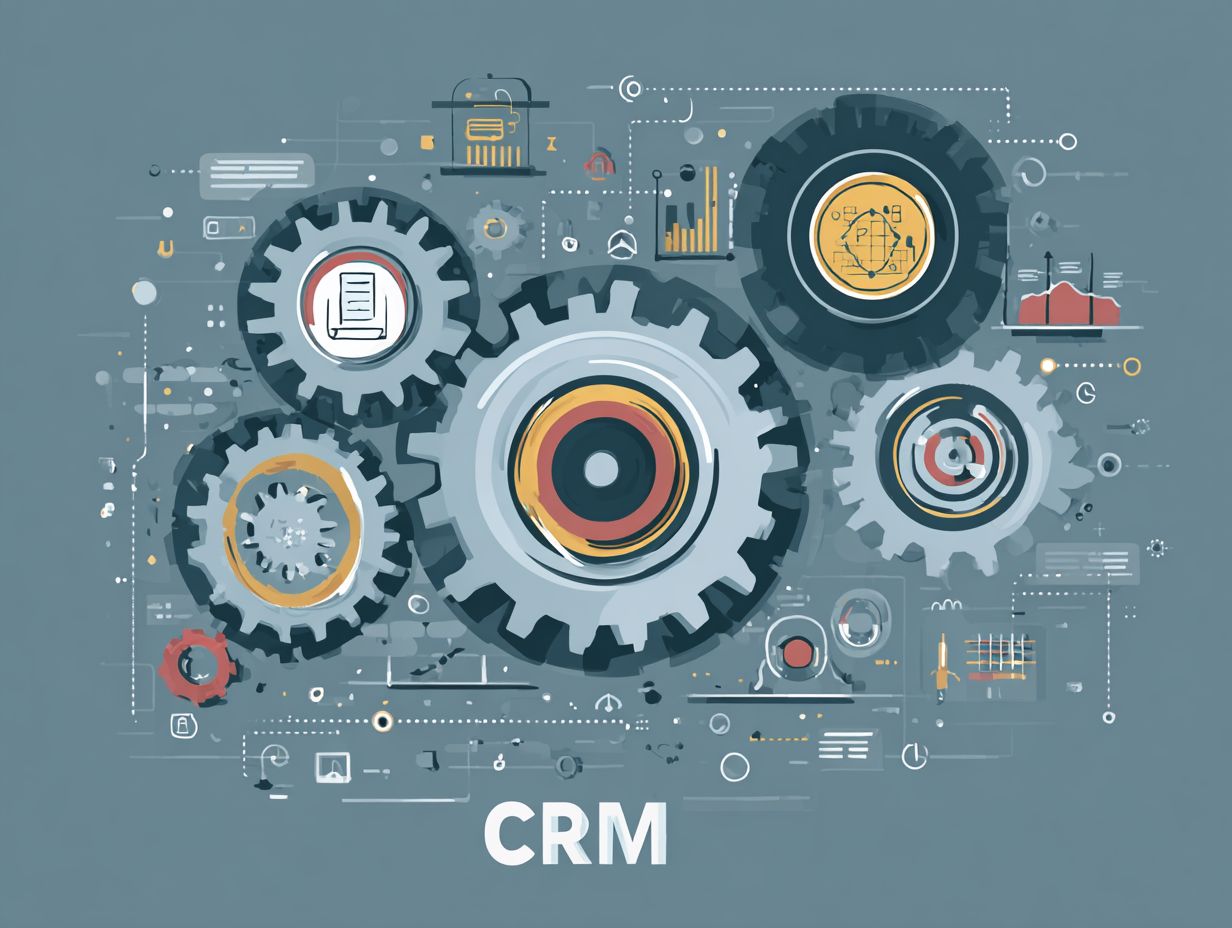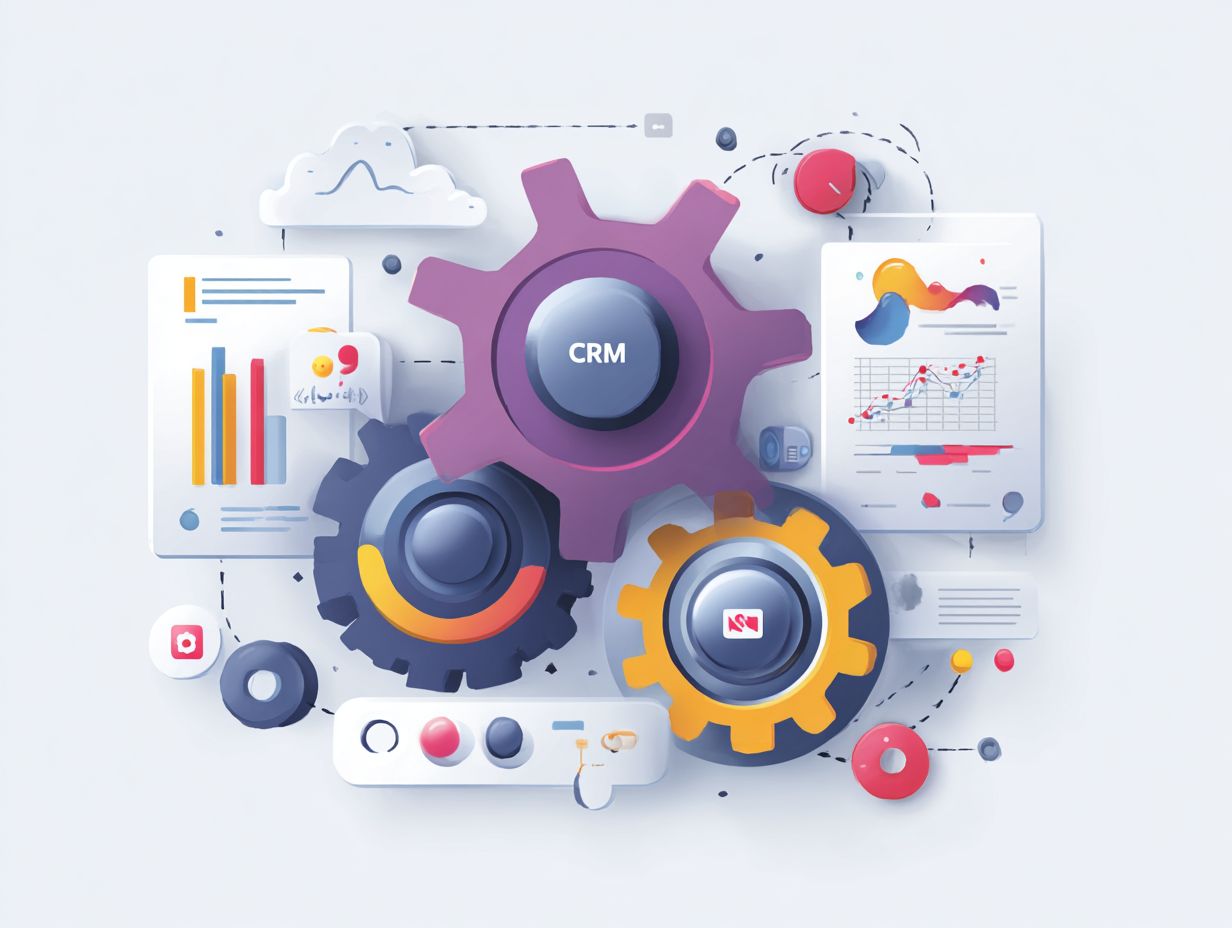CRM Integration: Definition, Benefits, and Best Practices
In the current market, integrating CRM systems can change the way companies handle customer information and make their operations more efficient. Industry experts like Missy Roback say that using tools such as Salesforce with other applications improves the customer experience and makes operations more efficient.
This article explains what CRM integration is, discusses its benefits, and shares practical advice to improve your business plan.
Key Takeaways:
- Connecting CRM tools with other systems helps manage data more easily and improves how customers experience the service.
- Using a CRM system offers many advantages, such as better data handling and improved customer service, which results in higher productivity and happier clients.
- When adding CRM, pick suitable tools and confirm data accuracy to make the integration work well and get the results you want.
What Is CRM Integration?

CRM integration means linking customer relationship management software like Salesforce or Creatio with other business tools to sync customer data across systems, improving how well things work. This process is often complemented by top-rated customer service software that enhances the overall customer experience by providing seamless interactions.
Benefits of CRM Integration

Using CRM systems can improve different parts of business operations, leading to better communication with customers and greater efficiency.
This improvement is often amplified when paired with robust customer experience strategies, as discussed in our guide to mastering customer experience for B2B. Studies indicate a 25% rise in sales performance after using these systems.
1. Improved Data Management
Linking CRM systems enhances data processing by keeping customer details current in all tools, reducing errors by up to 50% and ensuring data accuracy.
To set this up, use API connections to connect your CRM with online shopping platforms like Shopify and WooCommerce. Begin by organizing your data fields-make sure customer details like email, purchase history, and preferences match across all systems. Tools like Zapier or Integromat can handle this syncing process automatically.
Establish regular audits to maintain data integrity, thus avoiding duplication and outdated information. By sticking to these recommended methods, you will create an easy exchange of information that improves how you manage customer relationships and how your operations run.
For an extensive analysis of how technology enhances customer interactions, our comprehensive study on customer experience and technology examines these connections in detail.
2. Enhanced Customer Experience
Businesses using CRM systems can provide an easy customer experience, resulting in a 30% rise in customer satisfaction with personalized marketing strategies.
By analyzing consumer behavior, businesses can segment their audience effectively. For example, with Google Ads, you can show ads to people who left items in their shopping carts, giving them discounts to get them to finish their purchase.
Facebook Ads lets you create targeted audience groups by monitoring activities on your website, resulting in more engagement with customized messages.
Setting up automatic emails, like welcome messages or birthday deals, can increase customer loyalty by showing that you value and recognize your clients. These strategies increase participation and help build lasting connections (see also our guide on boosting sales and retention with effective customer experience marketing).
Best Practices for CRM Integration
Successfully integrating CRM systems involves following good practices to achieve lasting results and improved efficiency.
This involves selecting the right tools and ensuring data is correct, which aligns with the principles outlined in our analysis of customer experience organizational structures.
1. Choosing the Right Tools
Selecting the right CRM integration tools can determine the efficiency of data handling and operational workflows, with options ranging from Salesforce (starting at $25/user/month) to Creatio (custom pricing). When choosing CRM integration tools, consider compatibility with your existing systems, pricing, and scalability.
For instance, HubSpot integrates seamlessly with various platforms such as Shopify, enhancing e-commerce operations without hefty costs.
Zoho CRM has different pricing levels, allowing small to medium businesses to use it. Look for tools that support automation, like Zapier, which connects over 2,000 apps, streamlining workflows.
Analyzing successful integrations can inform your choice; for example, a company used Salesforce with HubSpot to improve lead tracking and saw a 30% increase in conversion rates.
2. Ensuring Data Accuracy
Ensuring data accuracy is critical, with studies showing that 80% of businesses experience negative impacts from poor data quality, emphasizing the need for real-time updates and validation techniques.
Check CRM systems often to make sure the information is accurate. Use tools like Dedupely to remove duplicate entries and improve data quality.
Setting up automatic reporting keeps you updated on any problems immediately. Company X improved their data accuracy by 30% after adopting these practices, allowing for better decisions.
Consider scheduling quarterly data reviews involving your team to identify potential inaccuracies collectively and update your CRM’s data entry protocols as needed.





